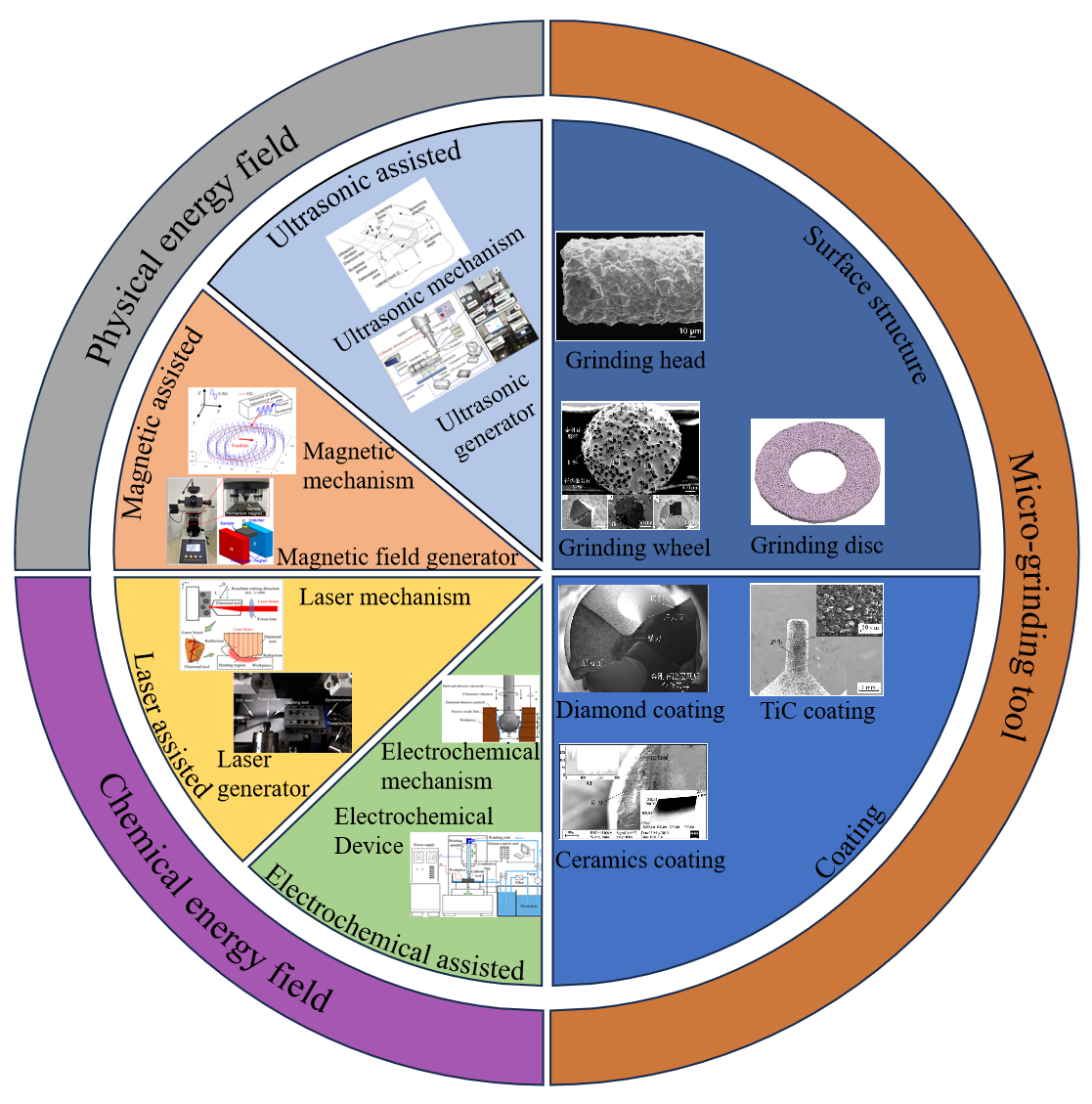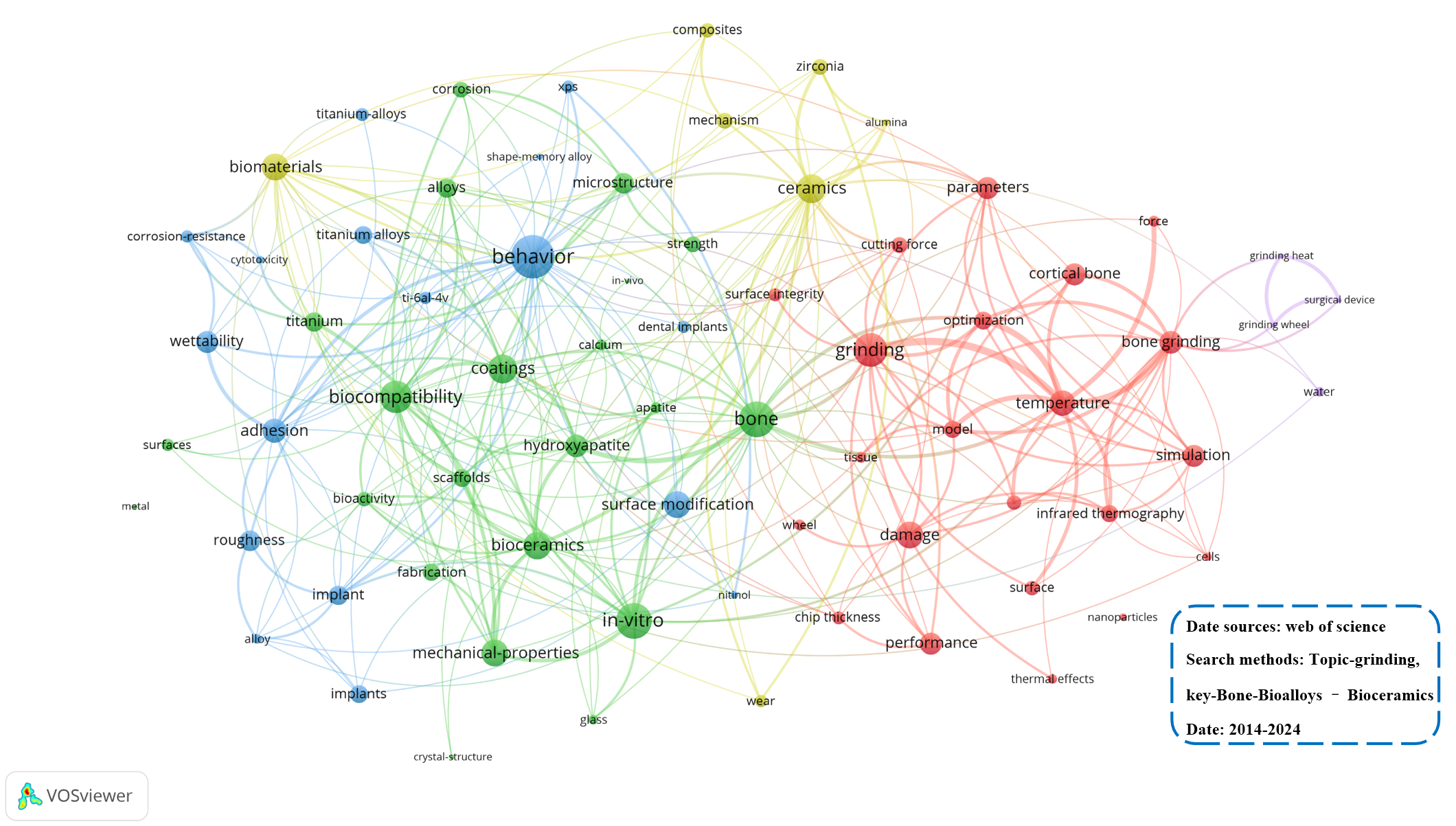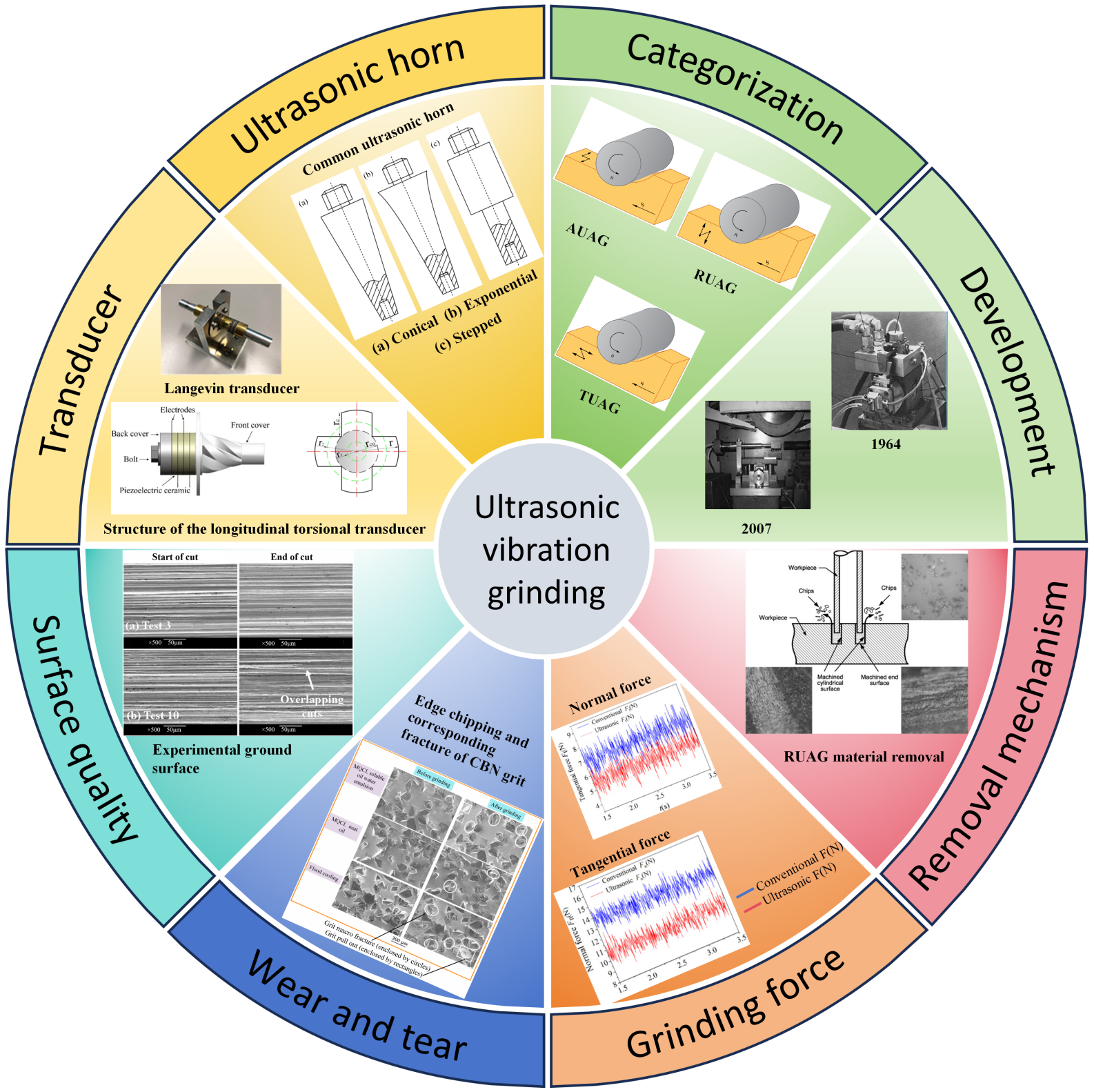Found 4 results
Open Access
Review
09 July 2025Muti-Energy Field-Assisted Grinding of Hard and Brittle Materials: Tools, Equipment and Mechanisms
Hard, brittle and difficult-to-machine materials are prone to surface cracks, subsurface damage and other defects in the traditional grinding process, accompanied by low processing efficiency and severe tool wear. As a new type of processing technology, energy field-assisted grinding provides a new approach for the efficient and high-quality processing of hard and brittle materials. This paper reviews the latest research progress of muti-energy field-assisted grinding from aspects such as the types and selection of grinding tools, processing equipment and physical-chemical coupled mechanisms. Firstly, micro-grinding tools are classified based on different surface structures and coating materials, with the aim to enhance processing efficiency, improve the surface quality and geometric accuracy of workpieces, and reduce tool wear. Secondly, the processing mechanisms, parameter selection and current difficulties faced by four energy field-assisted grinding methods, including laser-assisted grinding, electrochemical-assisted grinding, magnetic-assisted grinding and ultrasonic field-assisted grinding, are discussed under both chemical and physical effects. Thirdly, different equipment and auxiliary devices developed for energy field-assisted grinding have been introduced, providing reliable platforms for the distribution design and efficient regulation of the energy field. Finally, the cutting-edge progress, main challenges and development trends of energy field-assisted grinding are prospected, illustrating the great potential of this technology in fields such as aerospace, electronics, and optical components.

Open Access
Article
25 February 2025Thermal Characterization Study of Double End Face Grinding Powder Metallurgy Stainless Steel 316L
Double end face grinding machining is a highly efficient surface grinding technique. And grinding temperature is an important factor affecting the surface quality of workpieces. However, it is difficult to monitor the surface temperature of the workpiece in real time because of the covered contact between the grinding wheel and the upper and lower surfaces of the workpiece during the machining process. This paper aims to conduct a mechanistic analysis and experimental investigation of the machining process to address this challenge. Initially, the paper conducts an analysis of the kinematic mechanism, modal analysis, and the grinding force mechanism specific to the double end face grinding process. Afterwards, the mechanisms leading to the generation of grinding heat and the associated heat transfer mechanisms are explored in depth. The paper then proceeds to solve the instantaneous temperature field during double end face grinding by the finite element method (FEM). Furthermore, the micro and macro profile heights of the machined workpiece surfaces are measured and analyzed. The results show that the machined workpiece surface shows a high center and low edge. This is due to the fact that the temperature at the edge of the workpiece is higher than the center during machining, resulting in more material removal. Through these investigations, the study is able to determine the optimal process parameters for the machining process. This in turn improves machining efficiency and product conformity. And these findings not only guide practical production processes but also provide a foundation for future theoretical research in this area.

Open Access
Review
16 January 2025Biological Bone and Replacement Materials in Grinding: Force Model and Processing Capability
Grinding is widely used in orthopedic surgery to remove bone tissue material, but due to the complex and brittle structure of bone, it is prone to mechanical stresses that cause cracks and damage to the bone tissue. Furthermore, bone replacement materials typically have high hardness, strength, and brittleness, which lead to increased tool wear and damage, such as cracks and deformation during grinding. Therefore, ensuring the surface quality of bone and replacement materials during the grinding process has become a critical issue. This necessitates the development of grinding force models that consider various processing parameters, such as feed rate and cutting depth, to guide industrial production. However, currently, research on the grinding force prediction models for bone tissue and its replacement materials is relatively scarce, and there is a lack of corresponding grinding force model reviews for unified guidance. Based on this, this article focuses on bone grinding technology and, conducts a critical comparative analysis of the grinding force models for bone tissue and its replacement materials, and then summarizes the grinding force prediction models in the grinding process of bone tissue and bone replacement materials. First, according to the material types and material removal mechanisms, the materials are categorized into bone tissue, bio-inert ceramics, and bio-alloys, and the material removal process during grinding is analyzed. Subsequently, the grinding force prediction models for each material and the accuracy errors of each model are summarized. The paper also reviews the application of these grinding force prediction models, explaining how processing parameters such as feed rate and cutting depth influence grinding forces and their interrelationship. Finally, in light of the current issues in the grinding of bone tissue and replacement materials, potential future research directions are proposed, aiming to provide theoretical guidance and technical support for improving the grinding quality of bone tissue and its replacement materials.

Open Access
Review
08 January 2025A Review of Ultrasonic Vibration-Assisted Grinding for Advanced Materials
Ultrasonic vibration-assisted grinding (UVAG), which superimposes high-frequency, micro-amplitude ultrasonic vibration onto conventional grinding (CG), offers several advantages, including a high material removal rate, low grinding force, low surface roughness, and minimal damage. It also addresses issues such as abrasive tool clogging, thereby enhancing machining efficiency, reducing tool wear, and improving the surface quality of the workpiece. In recent years, the rapid development of advanced materials and improvements in UVAG systems have accelerated the progress of UVAG technology. However, UVAG still faces several challenges in practical applications. For example, the design and optimization of the ultrasonic vibration system to achieve high-precision, large-amplitude, and high-efficiency grinding remain key issues. Additionally, further theoretical and experimental studies are needed to better understand the material removal mechanism, the dynamics of grinding force, abrasive tool wear, and their effects on surface quality. This paper outlines the advantages of UVAG in machining advanced materials, reviews recent progress in UVAG research, and analyzes the current state of ultrasonic vibration systems and ultrasonic grinding characteristics. Finally, it summarizes the limitations of current research and suggests directions for future studies. As an emerging machining technology, UVAG faces challenges in many areas. In-depth exploration of the theoretical and experimental aspects of high-precision, large-amplitude, and high-efficiency ultrasonic vibration systems and UVAG is essential for advancing the development of this technology.
